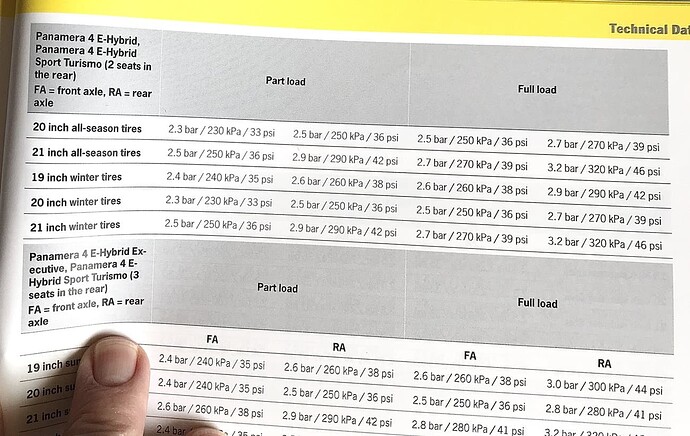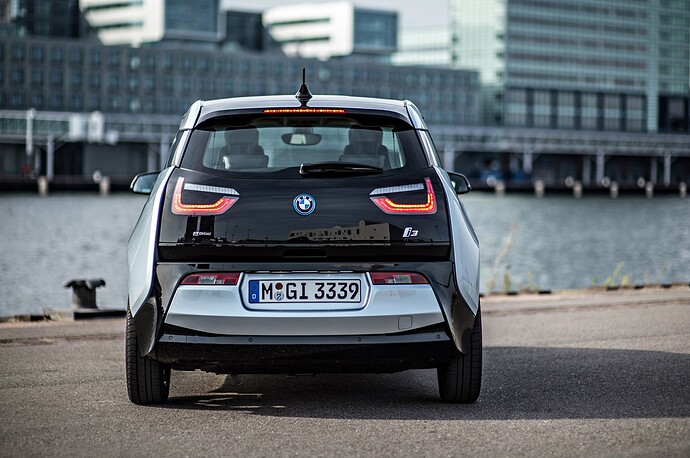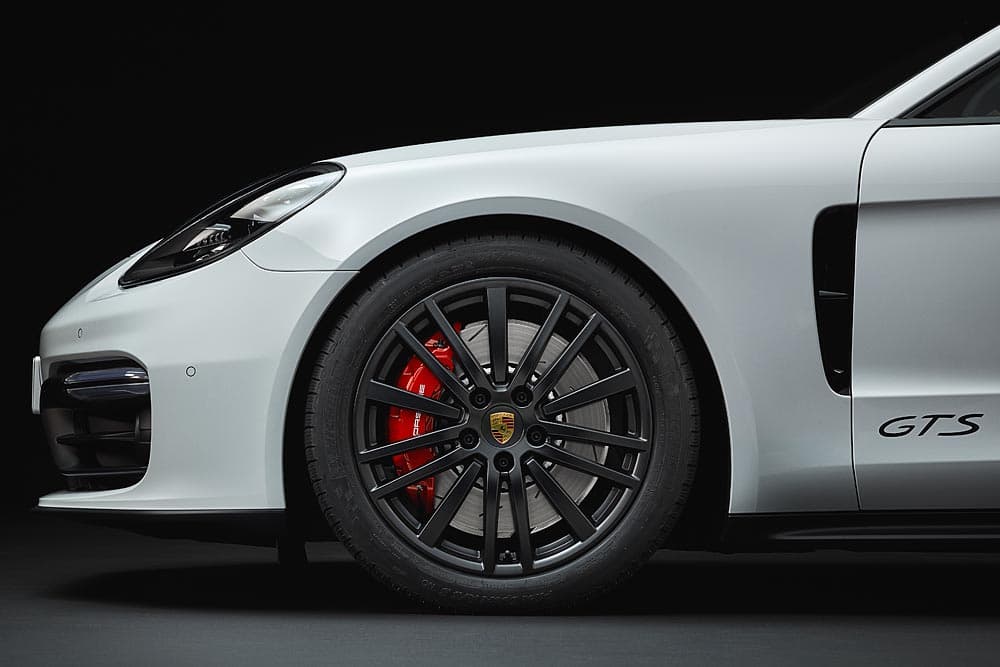Formula 1 Tire pressure is about 25 PSI
Passenger cars Tire pressure is about 35 PSI
Commercial Vans Tire pressure is about 50 PSI
Spare “Donut” Tire pressure is about 60 PSI
Semi Truck Tire Pressure is about 100 PSI
the higher the tire pressure the lower the performance. in fact in Formula 1 you get disqualified if your tire pressure is too low, which is considered cheating.
the reason is simple - the lower the pressure the higher the surface of the contact patch between tire and the road. the weight supported by the tire after all is a product of contact patch surface and the tire pressure, so if weight is a constant then high pressure means lower contact patch.
the size of the contact patch of course for a given rubber compound is how much grip you’re going to have for acceleration, braking and cornering.
so low tire pressure oddly enough more or less guarantees good grip with one exception - and that is vehicles with high center of gravity, namely SUVs.
SUVs use large contact patch not for grip but for off-road performance whereas their grip on dry pavement is artificially limited by using rubber compounds that don’t have much grip. why ? because SUVs are designed to SLIDE if they spin out rather than FLIP. if SUV tires had good grip the SUV would FLIP when cornering too hard or during a spin.
now the SUVs could have crippled the grip by using narrow tires but that wouldn’t match the style SUVs go for so they use big fat tires but a deliberately useless rubber compound that doesn’t grip. thus SUVs break the rule that lower tire pressure equals better grip.
but if a car has a low center of gravity and low tire pressure it should be able to grip pretty well at least when fitted with good tires.
on an SUV you should NOT fit grippy tires unless you want it to flip over !
an exception to this would be something like an Audi E-Tron SUV which despite being an “SUV” has a fairly low center of gravity and is also pretty wide and corners pretty flat and in the “S” version has fairly grippy tires.
so there are exceptions to most rules but what remains true is that it is impossible to achieve high grip with high tire pressure because it necessitates a low ratio of tire contact patch to car weight ( that’s what tire pressure is, really ).
let’s look at recommended tire pressure for Panamera Hybrid ( no that’s not my finger )
as you can see tire pressure is higher for 21" rims … my guess is to protect the rims from getting destroyed on potholes.
3 out of 4 panameras come with 21" rims even though it’s a $3,000 option. when you go for that rim size you sacrifice fuel economy, ride quality, and probably grip as well since you’re reducing tire patch size … yet people will make all those sacrifices for style.
of course there is more to grip than just contact patch size. compound choice and sidewall stiffness etc. play a role as well. but all else being the same lower tire pressure means better grip, otherwise you wouldn’t be disqualified from Formula 1 races for under-inflating tires when they already run at pressures that are about 70% the pressure street cars run at.
and finally let’s see if we can disqualify a car based on tire pressure alone. yes we can. the car is BMW i3. which has 44 PSI recommended for rear tires. this is commercial van tire pressure territory.
you’re probably thinking - i could have told you that car has no grip just by looking at the picture of the tires and how skinny they are.
yes that is true.
but now you can also do it scientifically !
if you want the best possible handling you probably want two things that are to some extent mutually exclusive:
1 - low tire pressure
2 - low tire sidewall / narrow profile tire
when the sidewall gets too narrow tire pressure has to go up to protect the rim …
but as we seen from Panamera spec sheet this only happens when you go from 20" to 21" rim on Panamera. the pressures for 20" are the same as for 19" for the most part ( it is different for different models such as V6 vs V8 and regular vs hybrid ).
the 20" Panamera wheel looks like this:
because Panamera platform was designed to underpin Bentleys the wheel arches are very large and 20" wheels still have plenty of sidewall as you can see.
that 20" wheel is pretty much what peak performance looks like for reasons discussed above. this is as low a sidewall as you can go ( for handling ) without having to increase the pressure to protect the rim and to have a half-decent fuel economy.
yes higher tire pressure all else being equal will increase fuel economy, but it is not the right way to go after fuel economy.
the right way to improve fuel economy is by having a taller sidewall on the tire. of course if it gets too tall the car will get sloppy in the corners.
so it’s a balance. like i said IMO that 20" panamera wheel is about ideal.
of course as i also said most go for 21" wheel because it looks sexier even though it costs more and you take a hit in basically all performance aspects.
here is what the 21" look like:
you can see even from the picture they had to put more pressure into the 21 versus the 20 to keep it from chewing up the sidewall. you will pay for that extra pressure with ride quality and grip and you will pay for that low sidewall with fuel economy and blowouts.
low profile tires for a car are somewhat like high heels for a woman. all style. completely impractical.
however by looking at tire pressure i think we can determine how low the sidewall can be pushed before it starts becoming a REAL problem.
worth noting when you google tire pressures for cars you get dealership pages with blanket recommendations like 32 PSI that they pull out of their ass
optimum tire pressures are specific to model of car, front or rear axle, load level ( passengers ) and wheel size installed … you find these on the door jamb sticker of the car and they are RARELY 32 PSI ( usually higher )
the reason dealers throw out figures like 32 PSI is because car dealers are subhuman and should all be killed …
when you look at actual door jamb stickers you see much higher figures i don’t know where they even get that 32 number from …
the point being always keep in mind all information online is BULLSHIT - people literally make all that stuff up
maybe next time you’re looking at cars at the dealership look at the door jamb sticker and note the pressures - lower is better !
it is ABSURD that this basic information would be impossible to find for many cars using a google search but that seems to be the case.
easier to find information about Porsches because Porsche drivers tend to be more intelligent and have much greater knowledge of cars than drivers of other brands of cars …



